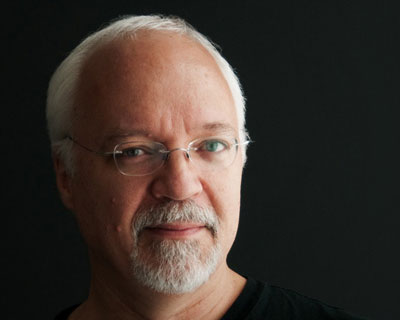Exploiting the Magical Powers of Prototyping to Drive Design Collaboration
Chris Risdon · Monday, April 18 · 8:30am – 5:30pm
Expand your design toolkit with new and practical ways to prototype. Tell the story of your designs better with prototypes that map out the experience across all digital and physical touchpoints.
Employ the best techniques for building prototypes at every stage of the design process. Boost collaboration amongst your team with the mantra of “Show me, don’t tell me.”
Chris has the magical power of turning ordinary designers into prototyping superheroes.
The Day’s Agenda
Morning
Prototype for many different situations and contexts
- Plan, build, and test prototypes at all scales for digital products, physical devices, and systems
- Make prototypes the touchstone for conversations across your cross-functional team
- Explore the context of use for complex service experiences with Experience Maps
Communicate product and service experiences across multiple channels
- Move from designing isolated screens to building cross-channel prototypes
- Choose the right level of fidelity to build and test experiences across multiple touch points
- Tell a compelling story to communicate intricate experiences across different platforms
Afternoon
Validate design concepts when you prototype scenarios and user stories
- Create multiple prototypes to test frameworks, high-level design concepts, and core ideas
- Choose the most effective prototyping tools, including paper models and interactive digital prototypes, to validate your ideas
- Take advantage of user stories and scenarios to guide prototype development
Rally the organization around your team’s ideas with user narratives
- Use prototypes as a communication tool for getting buy-in for your designs
- Create compelling stories with your prototypes to socialize design concepts to stakeholders
- Design storyboards and videos to describe the complete user experience and ensure the prototypes stand on their own
Use prototypes to their greatest ability
Design experiences that unfold over time and space
The best teams have shifted their thinking from designing for “products” to designing for “systems and services.” Successfully map out the users’ holistic experience with cutting-edge prototyping techniques.
Explore multiple design approaches throughout the development process
Prototypes are a core part of a designer’s craft, yet many teams fail to effectively utilize them. All too often, teams lock into the first design idea that comes along. By creating multiple prototypes, your team can explore more effective, cohesive, and easier-to-implement solutions.
End the endless design debates
Non-designers and stakeholders are now deeply involved in our design process, yet often don’t have any design knowledge or expertise. Prototypes become a common language to get everyone on the same page.
You’ll see how to:
- Build low and high-fidelity prototypes for physical and digital spaces
- Prototype core interactions, patterns, content, and risky functionality
- Test concepts and ideas throughout all stages of the design process
- Tell a compelling story to effectively socialize your design ideas
- Use narrative prototypes for empathy and buy-in across the organization
- Facilitate design collaboration with all stakeholders
Plan, build, and use prototypes in a more strategic way
Identify the right prototyping technique to use for common situations and design problems
You can use prototypes for many different purposes, including exploring ideas, communicating your thinking to stakeholders, or mapping the world that a product lives in.
Work more effectively with non-designers and stakeholders to increase your influence
Involve all collaborators in the prototyping process to increase buy-in and cultivate user empathy. This approach ensures your product team involves you in the strategic discussions that matter.
Create a best-in-class experience for users
By designing effective prototypes, the developers can build what you intended, resulting in a seamless user experience across all touch points.
Plan, build and test your prototypes at all stages of the development process
A rigorous design and testing process guarantees your team builds higher quality products and services.
Expand your designer toolkit and hone your prototyping skills
Throughout the day, Chris will help you practice and refine your skills, as you work with both physical and digital prototyping techniques. You will receive a “cheat sheet” for how, when, and why to use each technique.
Chris Risdon Expert, Advanced Prototyping Methods

One of my favorite hobbies is to watch Chris explain the theory and practice of using prototypes to a room full of designers. One by one, I can see when each designer reaches peak Risdon Wisdom, ready to burst out of the room and start the making.
Over the last few years, I watched as Chris has grown his career, first as a Design Director at Adaptive Path, and now at Capital One. He’s got two decades of applying the perfect combination of graphic, interaction, and service design to successful products and services, for an amazing array of clients, from large enterprise to small start-ups. Every time Chris teaches a workshop for us (this will be his third), the attendees just gush with glee and excitement over what they learned.
Don’t forego this opportunity to experience your own peak Risdon Wisdom. Then be ready to revitalize your own design practices with the new superpowers of prototyping.


